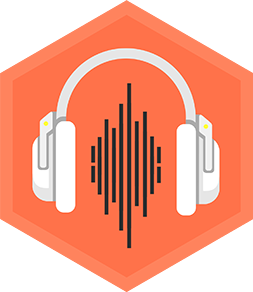Beatbox a Kick Sound
Learn to produce a deep kick drum sound in beatboxing through mouth shape, breath control, and practice exercises to build rhythm and timing.



Step-by-step guide to Beatbox a Kick Sound
Step 1
Sit on the cushion.
Step 2
Sit up straight.
Step 3
Take one deep breath through your nose and breathe out slowly to relax.
Step 4
Put the mirror in front of you so you can see your mouth.
Step 5
Open your mouth slightly.
Step 6
Press the back of your tongue gently against the soft part of the roof of your mouth and hold it there.
Step 7
Tighten your belly to push a short burst of air from your diaphragm.
Step 8
Pull your tongue away sharply to make a short "k" pop sound.
Step 9
Repeat the "k" pop three times with even spaces between each pop.
Step 10
Hum a low note and notice the vibration in your chest.
Step 11
While holding the low hum make the "k" pop to combine chest resonance with the pop and create a deeper kick.
Step 12
Count "1 2 3 4" out loud and place the deep kick on every "1" for one minute to build timing.
Step 13
Share your finished creation on DIY.org
Final steps
You're almost there! Complete all the steps, bring your creation to life, post it, and conquer the challenge!


Help!?
What can we use if we don't have a cushion or a mirror for the beatbox kick activity?
Use a folded towel or a stack of pillows instead of the cushion to sit up straight, and use a smartphone front camera or a shiny spoon as a mirror so you can watch your mouth while practicing the 'k' pop.
My 'k' pop sounds weak or like a cough—what should I check in the steps?
Make sure the back of your tongue is pressed gently against the soft part of your roof, tighten your belly to push a short burst of diaphragmatic air, then pull the tongue away sharply and practice the three evenly spaced pops while watching in the mirror.
How can I adapt this activity for different ages?
For younger children, have a parent help with tongue placement and shorten the exercise to 15–30 seconds of placing the kick on '1', while older kids can extend to longer minutes, increase tempo, or try overlapping different low hum pitches for deeper chest resonance.
How can we enhance or personalize our finished kick sound before sharing on DIY.org?
Record the one-minute 'kick on 1' pattern with a phone, use a metronome app to lock the '1 2 3 4' timing, experiment with different low hum notes to change chest resonance, and add simple phone reverb or layering before posting on DIY.org.
Watch videos on how to Beatbox a Kick Sound
How To Beatbox - Kick Drum Tutorial
Facts about beatboxing and vocal percussion
⏱️ Practicing kicks with a metronome helps build steady timing so your kick locks perfectly into the beat.
🎤 Beatboxing grew out of hip-hop culture in the 1980s and was popularized by artists like Doug E. Fresh.
🫧 Changing the shape and size of your mouth cavity can make a kick sound lower and boomier—small changes make big differences!
🥁 The classic beatbox "kick" often uses a closed-lip plosive (like a strong "B") combined with diaphragm power to create a deep thump.
🏆 There are international beatboxing competitions where performers compete with complex kicks, snares, and rhythms.
How can my child learn to beatbox a deep kick drum sound?
What materials or tools do we need to practice the beatbox kick sound at home?
What ages are appropriate for learning beatbox kick sounds?
How can I keep my child safe and protect their voice while practicing beatbox kicks?


One subscription, many ways to play and learn.
Only $6.99 after trial. No credit card required



